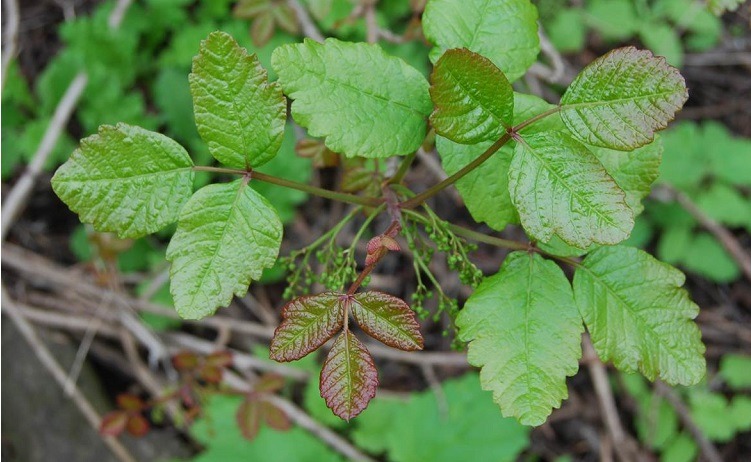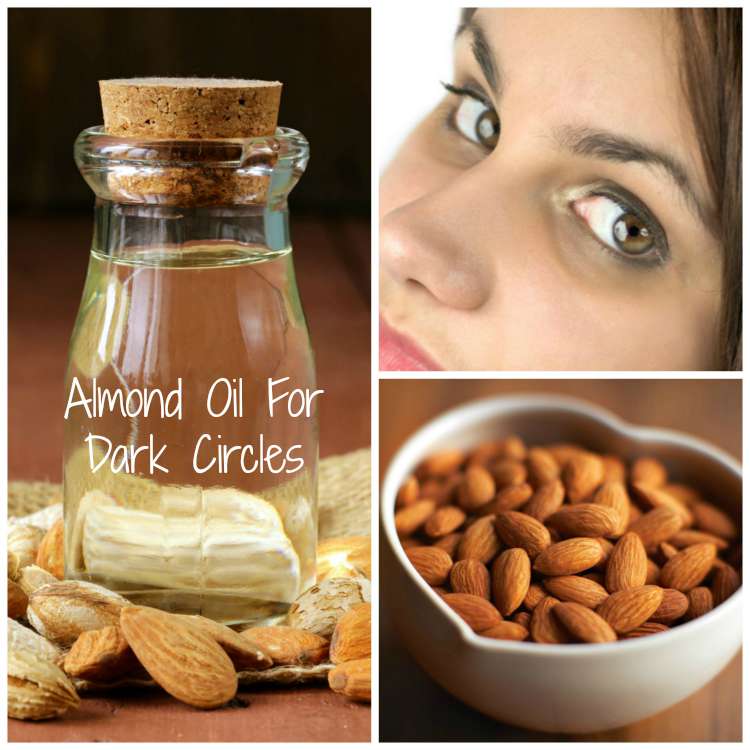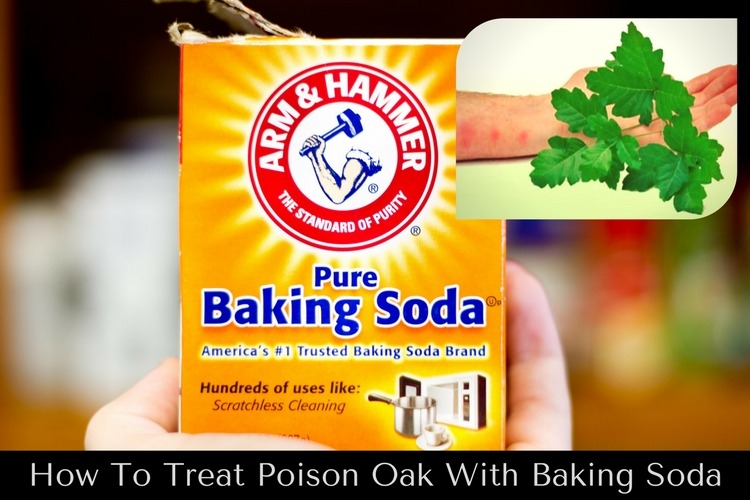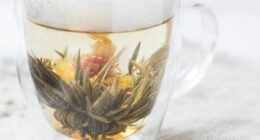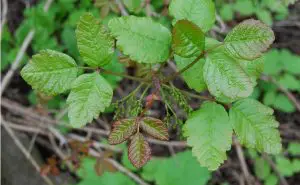 Poison oak, also called poison ivy or poison sumac, is a plant that causes rashes or irritation when its colorless oil urushiol makes contact with the skin. Found all over the U.S., poison oak should be avoided at all costs. When exposed to poison oak, small bumps, itchy blisters, or painful rashes will appear on the affected skin within 12 – 48 hours. Poison ivy rash can then spread rapidly during the first three days, especially when you scratch the affected area.
Poison oak, also called poison ivy or poison sumac, is a plant that causes rashes or irritation when its colorless oil urushiol makes contact with the skin. Found all over the U.S., poison oak should be avoided at all costs. When exposed to poison oak, small bumps, itchy blisters, or painful rashes will appear on the affected skin within 12 – 48 hours. Poison ivy rash can then spread rapidly during the first three days, especially when you scratch the affected area.
Other symptoms include redness, burning, fever, inflammation, and even infection, if left untreated. Be sure to keep the affected area clean and dry and thoroughly clean any contaminated objects such as shoes and clothes. Generally, poison oak will go away on its own. That said, there are many natural home remedies to aid in the associated side effects.
Home Remedies for Poison Oak:
Try these natural home remedies for treating poison oak.
1. Rinse with Water
As soon as you come into contact with poison oak, rinse the affected area with water immediately. Run water over the area for 10 – 15 minutes to flush as many toxins away as possible. Do not use hot or warm water as they open the affected skin pores which allow toxins to go inside. Scrub your hands with soap and water. Use a toothbrush to clean under your fingernails. Be sure to throw the toothbrush away after scrubbing.
2. Ice or Cold Compress
Even after washing the affected area thoroughly with water, mild rashes may occur. Cold or ice compresses are the best way to treat rashes, but remember to not place ice directly on the skin. Wrap the ice in clean cloth and place on the affected area for 15 minutes every hour for best results. After 15 minutes let it air dry, do not rub the area with towel or cloth. Alternately use frozen vegetables or cotton balls dipped in cold water.
3. Baking soda
Baking soda neutralizes the acid found in poison oak, ridding itchy rashes on the skin. It also provides a soothing effect, curing pain and inflammation. The baking soda bicarbonate pulls the fluid from blisters, drying them completely.
Process 1:
- Mix 3 parts of baking soda with 1 part of water to make a paste.
- Apply to the affected area.
- Leave until completely dry and wipe away.
- Repeat 3 – 4 times daily for best results.
- Note: Alternately add 1 cup of baking soda to cold bath water to treat large areas.
Process 2:
This process is used for treating red, oozing blisters. Do not to apply the pads near the eyes.
- Mix 2 teaspoons of baking soda and 1 liter /1 quart of water to make a paste.
- Soak Sterilized gauze pads in the paste.
- Apply to the affected area.
- Leave for 10 – 15 minutes.
- Repeat 4 times daily for best results.
- Note: Don’t apply near eye as it causes blurred vision.
Process 3:
Baking soda and vinegar speed the healing process of poison oak, offering relief from itching and irritation.
- Mix 3 teaspoons of baking soda and vinegar to make a paste.
- Scrub the affected area with the paste while showering.
- Rinse thoroughly and pat dry with a towel.
- Apply apple cider vinegar on all over the scrubbed – cleansed blisters.
- You feel burning sensation but within few minutes you will get relief from itching.
- Repeat regularly for best results.
4. Turmeric
Turmeric contains natural antibacterial and anti-inflammatory properties. Turmeric combined with lemon juice heals poison oak rashes.
Process:
- Mix 1 tablespoon of turmeric and lemon juice to make a paste.
- Apply to the affected areas.
- Leave for 15 – 20 minutes and rinse with water cool water.
- Repeat 1 – 2 times daily until rash disappears.
- Note: Alternately use alcohol instead of lemon juice but apply once in a day.
5. Jewelweed
Jewelweed is nature’s gift to counteract poison oak. Jewelweed with orange flowers is very effective for treating the poison oak. After coming into contact with poison oak, break the stem of jewelweed and rub on the affected area.
Process:
- Boil chop handful of jewelweed leaves
- Boil them in 2 glasses of water until the liquid turns a dark orange color.
- Strain and pour the liquid into an ice cube tray and freeze.
- When frozen, wrap ice in a cloth and apply to the affected area.
- Leave on for few minutes.
- Repeat regularly to get rid of poison oak.
6. Peppermint Essential Oil
Peppermint oil contains menthol which relieves painful burning and itching associated with rashes. Combine equal quantities of peppermint oil with any carrier oil (coconut or olive oil) and apply to the affected area for added relief.
Process 1:
- Mix 2 cups of green clay, 1 tablespoon of salt, and few drops of peppermint essential oil.
- Add sufficient amount of water to make a paste.
- Apply to the affected area.
- Leave for 30 – 40 minutes and rinse with water.
- Apply regularly for best results.
Process 2:
- Add peppermint oil to cold water.
- Soak a towel in the water.
- Apply to the affected areas.
- Leave for 1 – 2 hours.
- Repeat regularly for best results.
7. Coffee
Coffee contains chlorogenic acid which acts as natural anti-inflammatory agent and thus heals the rashes caused by poison ivy.
Process 1:
- Rinse the affected area with a cup of cold, black coffee for best results.
- Or Use a cotton ball to assist in application, if desired.
Process 2:
- Combine half a bowl of baking soda with cold black coffee to make a paste.
- Apply on rashes and let it air dry.
- Repeat 2 to 3 times a day for added results.
8. Potato
Potato contains excellent anti-inflammatory properties which soothes the skin.
Process:
- Rinse and blend one potato with water to make a thick paste.
- Apply to the affected area and cover with a cloth or plastic wrap.
- Leave for 30 – 60 minutes and rinse with cold water.
- Repeat regularly to get relief.
9. Plantain
Plantain has broad leaves containing allantoin which have anti-microbial and anti-inflammatory properties. Tear the leaves into pieces and rub the affected areas to clear infection and help with the pain and discomfort caused by poison oak.
Process 1:
- Chop or tear shaded spots plantain leaves as they have more fluid content.
- Take them into palm and start rubbing it by using your thumb for about 3 – 5 minutes.
- It makes the fluid to come out of the leaves.
- Rub it gently or you can also pour its extracted juice on the affected areas and then place this wet mass on that areas.
- Repeat 2 to 3 times a day.
Process 2:
- Blend fresh plantain leaves, bentonite clay, and water to make a paste.
- Apply to the affected area and cover with gauze, if desired.
- Leave for 2 – 3 hours.
- Repeat regularly for best results.
Process 3:
- Add 1 cup of hot water to 1 chopped plantain leaves or 2 teaspoons of dried plantain herb.
- Let it steep for few minutes by covering with lid.
- When cool, pour tea liquid in spray bottle.
- Spray affected area.
- Repeat regularly to get relief from the pain and the burning sensation.
10. Ayurvedic Lepa
Ayurveda is an ancient Indian medicine. It contains antibacterial and anti-inflammatory properties which purify blood and benefit skin in many ways.
Ingredients:
- Turmeric powder – 1 tablespoon
- Neem powder – 1 tablespoon
- Fuller’s earth – 3 tablespoons
- Manjishtha powder – 1 tablespoon
- Water
- Neem oil
Process:
- Combine turmeric, manjishtha, neem, fuller’s earth, and water to make a paste.
- Apply to the affected area.
- Leave until dry and wipe away with dry hands by rubbing gently.
- Do not wash with water and apply neem oil to the affected area and gently massage.
- Repeat regularly for best results.
11. Banana Peel
Banana peel contains minerals which soothe irritated and itching skin affected by rashes and blisters. This remedy only offers temporary relief, so be sure to combine it with other remedies.
Process:
- Rub inside part of banana peel on the affected area.
- You will get relief from itching and irritation within 2 – 3 hours.
- Repeat regularly.
- Or cut the peel into pieces and place inside part on the rash.
- Leave on 20 to 30 minutes with the help of adhesive tape and then remove.
- Repeat daily.
12. Acorn Wash
Acorns, or oak nuts, contain nutritious components which have tannins, anti-viral, and antiseptic properties which effectively treat poison oak, poison ivy, skin irritations, rashes, burns, abrasions, and cuts.
Process:
- Boil handful of acorns in 1 liter of water until they turn a dark brown color.
- Let it cool for room temperature.
- Use the water to rinse the affected area.
- Repeat regularly for best results.
- Note: Alternately pour water in ice cube tray and freeze. Apply to the affected area.
13. Oatmeal
Oatmeal has avenanthramides and phenols which contain anti-inflammatory properties. This heals the pain, itchiness, and discomfort caused by poison oak. Oatmeal has avenacins which have anti-fungal properties and contains saponins, a natural cleanser that absorbs oil, dirt, and odor. Oatmeal balances the skin pH levels of the skin which, in turn, relieves itching and dry skin.
Process 1:
- Place 1 cup of Colloidal or ground oatmeal in a cheesecloth, then place in a nylon or pantyhose.
- Knot the nylon or pantyhose.
- Place the bag in lukewarm bath water.
- Soak in the water for 20 – 30 minutes.
- Rinse with water and pat dry with a soft towel.
- Repeat 2 – 3 times daily for best results.
- Note: Alternately add loose oatmeal to bath water and stir well.
Process 2:
- Combine 3 cups of oatmeal, 2 teaspoons of salt and warm water to make a paste.
- Apply to the affected area.
- Leave for 30 – 45 minutes and wipe away.
- Repeat twice daily for best results.
14. Rubbing Alcohol
Rubbing alcohol has disinfectant, soothing, and cooling properties which sterilize the skin and prevent infection.
Process:
- Apply rubbing alcohol to the affected area using a cotton ball.
- Wrap the area in gauze.
- Repeat regularly or 2 – 3 days for best results.
- Note: Applying rubbing alcohol immediately after your skin has came into contact with poison oak helps to minimize the rash, pain and the discomfort.
15. Vinegar
Vinegar’s acidity prevents poison oak rash from spreading to other parts of the body. A vinegar cold compress dries out the rash and reduces itching. Rinse the affected area with diluted apple cider vinegar daily for best results.
Process 1:
- Dilute ½ cup of vinegar in 1 ½ cup of water.
- Chill in the refrigerator for 2 – 3 hours.
- Soak a cloth, cotton balls, or a brown paper bag in the vinegar.
- Apply to the affected area and leave for 2 – 5 minutes.
- Repeat daily for 1 – 2 weeks for best results.
Process 2:
- Mix equal quantities of apple cider vinegar and water.
- Stir it well and use this mixture to wash the rashes properly.
- Repeat regularly.
- Or soak cotton ball or brown paper bag in apple cider vinegar.
- Apply it on rashes and let it air dry.
- Repeat regularly
- Note: Dilute with water if you have stinging sensation.
16. Watermelon
Watermelon rinds have the same effect as a cold compress. Its juice dries out blisters.
Process:
- Chill a watermelon rind in the refrigerator.
- Gently rub the rind over the affected area.
- Leave until dry.
- Repeat 3 – 4 times daily for best results.
17. Aloe Vera
Aloe vera has antibacterial and anti-inflammatory properties that help with poison oak symptoms.
Process:
- Use a knife to cut the edges of an aloe vera leaf to extract its gel.
- Apply to the affected area.
- Leave until dry.
- Repeat 2 – 3 times daily for best results.
- Note: Alternately buy alow vera gel from the store. Ensure the gel contains a minimum of 90% real aloe vera.
18. Buttermilk
Buttermilk contains a soothing property and is high in protein which clears fluid from blisters.
Process 1:
- Mix buttermilk, vinegar, and salt in 1:1:1 ratio to make a paste.
- Apply to the affected area and gently rub.
- Repeat regularly for best results.
Process 2:
- Add buttermilk to warm water.
- Use this to wash the affected area and leave it like that for few minutes.
- Then you can either wash with water or wipe it off completely.
Tips To Prevent Poison Oak:
- Be sure to know what poison oak looks like so that you can avoid it.
- Never burn poison oak as this will spread the allergens in the air.
- Clean your pets thoroughly to prevent poison oak contamination.
- Wear long sleeve shirts and long pants especially when in wooded areas.
- Always wear covered shoes when outside, especially when camping.
- Don’t scratch the rash as his causes it to spread.
- Avoid touching the affected area with your bare hands. If you do touch it, immediately wash your hands.
- Remove and wash your clothes (and any surrounding objects) immediately after coming into contact with poison oak. This will prevent it from spreading.
- Dilute essential oils like tea tree, cypress, lavender, geranium, and chamomile with water and apply to the affected area 2 – 3 times daily to cure poison oak.
- Soak chamomile tea bags in water. When cool, apply to the affected area to help with itchy rashes.
- Place fresh cucumber slices on the affected area daily to help with pain and inflammation. Alternately use cucumber paste, if desired.
- Apply hydrogen peroxide to the affected area to help with the redness and itching associated with poison oak.
- Use a cotton ball to apply cold milk to the affected area to help with rashes.
- Add Epsom salt to bath water and soak for 15 – 20 for added relief.
- For instant relief from itching, spray witch hazel on the affected area.
- Lemon juice eliminates the effect of poison oak’s toxic oil on the body with its acidic nature and astringent properties. Apply lemon juice to the affected area to help with irritation and itchiness.
- Regular application of calamine lotion or hydrocortisone cream on the affected area will help with skin rashes.
- Antihistamine pills can reduce itching and irritation. Do not apply antihistamine on the skin, as this will worsen rashes and itching.
- Consult your doctor if suffering from severe blistering, swelling, redness, shortness of breath, if you have inhaled any smoke of burning poison oak or ivy plants, or if the rash spreads to your eyes, nose, throat, mouth, or genitals for immediate medications and treatment.
Have you tried any of these methods? Do you know any other methods to treat poison oak? Share your experience with us!
